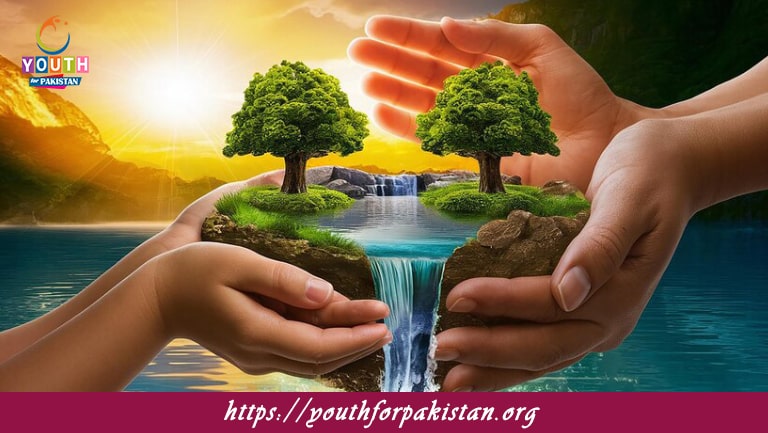Welcome to the Water and its Properties MCQs with Answers. In this post, we are sharing Water and its Properties Multiple Choice Questions and Answers in Everyday Science section for various competitive exams in Pakistan. Each question offers a chance to enhance your knowledge regarding Water and its Properties online MCQs Test.
What is the chemical formula for water?
A) H₂O
B) CO₂
C) H₂SO₄
D) CH₄
Which property of water allows it to dissolve many substances?
A) Polarity
B) Density
C) Hardness
D) Viscosity
What is the boiling point of water at standard atmospheric pressure?
A) 100°C
B) 0°C
C) 50°C
D) 25°C
What is the freezing point of water at standard atmospheric pressure?
A) 0°C
B) 100°C
C) 50°C
D) 25°C
Which property of water is responsible for its high surface tension?
A) Hydrogen bonding
B) High specific heat
C) Low density
D) Polarity
What is the density of water at 4°C?
A) 1 g/cm³
B) 0.5 g/cm³
C) 2 g/cm³
D) 1.5 g/cm³
Which of the following is an example of water’s high specific heat capacity?
A) Water can absorb a lot of heat before its temperature rises significantly.
B) Water evaporates quickly.
C) Water boils at a low temperature.
D) Water freezes quickly.
What is the process by which water changes from a liquid to a gas?
A) Evaporation
B) Condensation
C) Freezing
D) Melting
What is the term for the heat required to convert a unit mass of a liquid into vapor without a change in temperature?
A) Latent heat of vaporization
B) Specific heat
C) Latent heat of fusion
D) Heat capacity
Which form of water has the lowest density?
A) Ice
B) Liquid water
C) Steam
D) Saltwater
What is the process by which water vapor changes into liquid water?
A) Condensation
B) Evaporation
C) Sublimation
D) Freezing
What is the term for the ability of water to move through porous materials?
A) Capillary action
B) Evaporation
C) Condensation
D) Filtration
Which property of water is demonstrated by its ability to form hydrogen bonds?
A) Cohesion
B) Adhesion
C) Surface tension
D) All of the above
How does water’s high heat of vaporization affect climate?
A) It helps moderate temperatures by absorbing and releasing heat slowly.
B) It increases the rate of evaporation.
C) It decreases the amount of precipitation.
D) It lowers the temperature of the atmosphere.
What is the term for water’s ability to dissolve many different substances?
A) Solvent property
B) Reactivity
C) Adhesion
D) Capillarity
What is the term for the amount of heat needed to change the temperature of 1 gram of water by 1°C?
A) Calorie
B) Joule
C) Watt
D) Kelvin
What causes water to have a high surface tension?
A) Hydrogen bonding between water molecules
B) High molecular weight
C) Low viscosity
D) High density
What is the term for the process in which ice turns directly into water vapor without becoming liquid first?
A) Sublimation
B) Melting
C) Deposition
D) Condensation
Which property of water allows it to form a meniscus in a graduated cylinder?
A) Adhesion
B) Cohesion
C) Density
D) Viscosity
How does the density of ice compare to liquid water?
A) Ice is less dense than liquid water.
B) Ice is more dense than liquid water.
C) Ice has the same density as liquid water.
D) The density of ice and liquid water is not comparable.
What is the term for the change of water from a solid to a liquid?
A) Melting
B) Freezing
C) Sublimation
D) Condensation
What phenomenon explains why water is able to climb up a plant’s stem from roots to leaves?
A) Capillary action
B) Evaporation
C) Condensation
D) Sublimation
Which of the following describes the process where water vapor turns into ice without becoming liquid first?
A) Deposition
B) Sublimation
C) Melting
D) Freezing
What is the heat required to change 1 gram of ice at 0°C to 1 gram of water at 0°C called?
A) Latent heat of fusion
B) Latent heat of vaporization
C) Specific heat
D) Heat capacity
What is the name for the measure of the amount of water vapor in the air?
A) Humidity
B) Precipitation
C) Dew point
D) Evaporation
What is the effect of water’s high specific heat on coastal climates?
A) Coastal areas have more moderate temperatures compared to inland areas.
B) Coastal areas have more extreme temperatures compared to inland areas.
C) Coastal areas have no temperature variations.
D) Coastal areas have higher temperatures compared to inland areas.
What happens to the temperature of water as it evaporates?
A) It decreases.
B) It increases.
C) It stays the same.
D) It fluctuates.
What term describes the amount of energy needed to raise the temperature of a given quantity of water?
A) Heat capacity
B) Latent heat
C) Specific heat
D) Thermal conductivity
Which of the following is true about water’s boiling point at higher altitudes?
A) It decreases.
B) It increases.
C) It remains the same.
D) It fluctuates widely.
What is the term for the process of water moving from the surface to the atmosphere?
A) Evaporation
B) Condensation
C) Precipitation
D) Runoff
What is the name of the force that causes water droplets to form spherical shapes?
A) Surface tension
B) Adhesion
C) Cohesion
D) Viscosity
What phenomenon occurs when water molecules escape from the surface of a liquid?
A) Evaporation
B) Condensation
C) Freezing
D) Melting
How does water’s high heat of fusion benefit organisms in cold climates?
A) It prevents rapid temperature changes in bodies of water, helping organisms survive.
B) It accelerates freezing of water.
C) It causes rapid temperature fluctuations in bodies of water.
D) It decreases the temperature of surrounding air.
What is the process of water turning directly from a gas to a solid called?
A) Deposition
B) Sublimation
C) Melting
D) Freezing
What property of water allows it to form hydrogen bonds?
A) Polarity
B) Nonpolarity
C) Low density
D) High viscosity
What is the term for the amount of heat needed to change 1 gram of water from liquid to vapor?
A) Latent heat of vaporization
B) Latent heat of fusion
C) Specific heat
D) Heat capacity
How does water’s high specific heat affect coastal weather patterns?
A) It leads to milder temperatures near the coast compared to inland areas.
B) It causes more extreme temperatures near the coast.
C) It has no effect on coastal weather patterns.
D) It leads to more precipitation near the coast.
What is the term for water’s ability to pull itself together?
A) Cohesion
B) Adhesion
C) Surface tension
D) Capillarity
What is the effect of water’s high latent heat of vaporization on sweating?
A) It helps cool the body effectively as sweat evaporates.
B) It increases the temperature of the body.
C) It decreases the evaporation rate of sweat.
D) It has no effect on sweating.
What is the term for the process where water vapor turns directly into a solid?
A) Deposition
B) Condensation
C) Sublimation
D) Melting
What causes water droplets to form on the outside of a cold glass?
A) Condensation
B) Evaporation
C) Sublimation
D) Melting
What is the term for the energy required to change 1 gram of ice at 0°C to 1 gram of water at 0°C?
A) Latent heat of fusion
B) Latent heat of vaporization
C) Specific heat
D) Heat capacity
Which property of water is most important for the formation of clouds?
A) Evaporation
B) Condensation
C) Freezing
D) Melting
What happens to the density of water as it freezes?
A) It decreases.
B) It increases.
C) It remains the same.
D) It fluctuates.
What is the name of the process by which water moves through a plant from roots to leaves?
A) Transpiration
B) Evaporation
C) Condensation
D) Sublimation
What phenomenon explains why water has a high boiling point compared to other similar-sized molecules?
A) Hydrogen bonding
B) Van der Waals forces
C) Ionic bonds
D) Metallic bonds
What is the primary reason for water’s high heat of fusion?
A) Hydrogen bonding
B) Low molecular weight
C) High molecular weight
D) Nonpolar nature
Which property of water is demonstrated when water forms a curved meniscus in a graduated cylinder?
A) Adhesion
B) Cohesion
C) Surface tension
D) Viscosity
What is the term for the energy required to raise the temperature of 1 gram of a substance by 1°C?
A) Specific heat
B) Heat capacity
C) Latent heat
D) Thermal conductivity
How does the density of water at 4°C compare to that at 0°C?
A) Water is more dense at 4°C.
B) Water is less dense at 4°C.
C) The density is the same at both temperatures.
D) The density fluctuates between these temperatures.
What effect does the high heat of vaporization of water have on Earth’s climate?
A) It helps to moderate temperatures by absorbing heat.
B) It increases the rate of global warming.
C) It decreases the amount of precipitation.
D) It has no effect on climate.
What term describes the phenomenon where water molecules stick to other surfaces?
A) Adhesion
B) Cohesion
C) Surface tension
D) Capillarity
Which property of water is responsible for the fact that it can dissolve many ionic and polar substances?
A) Polarity
B) Density
C) Viscosity
D) Surface tension
What is the term for the ability of water to resist changes in temperature?
A) Specific heat capacity
B) Heat of vaporization
C) Latent heat
D) Thermal conductivity
If you are interested to enhance your knowledge regarding Physics, Chemistry, Computer, and Biology please click on the link of each category, you will be redirected to dedicated website for each category.










